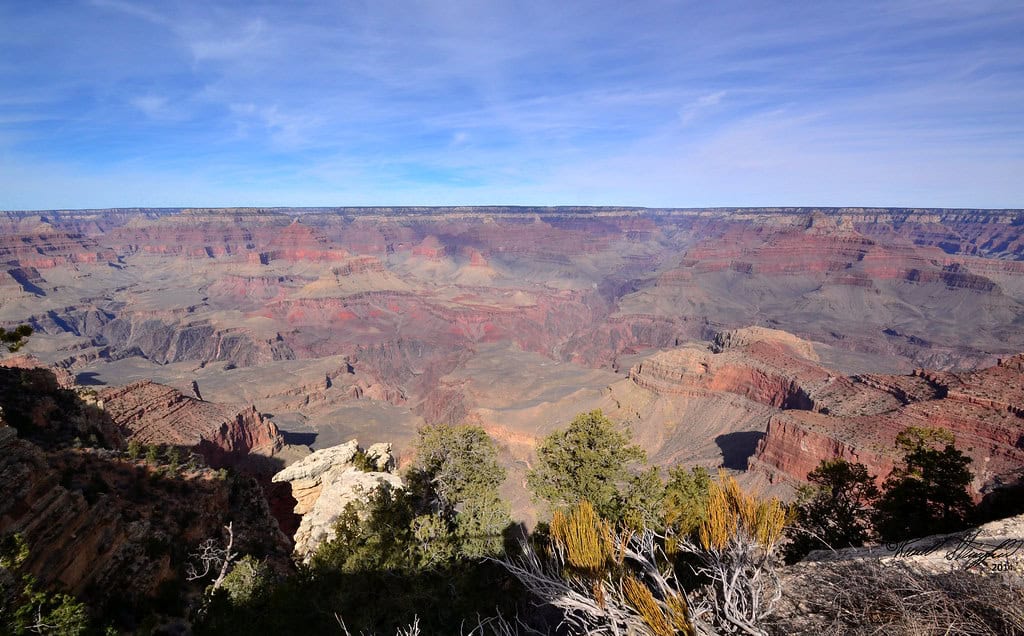
The Grand Canyon, located in northern Arizona, is one of the most iconic and awe-inspiring natural wonders of the world. This immense chasm, carved by the Colorado River over millions of years, attracts millions of visitors annually who come to witness its breathtaking beauty, intricate geology, and rich cultural history. This article explores the Grand Canyon’s geological significance, ecological diversity, historical background, conservation efforts, and recreational opportunities.
Geological Significance
The Grand Canyon is a geologist’s paradise, offering a visible record of Earth’s history spanning nearly two billion years. The canyon is approximately 277 miles (446 kilometers) long, up to 18 miles (29 kilometers) wide, and over a mile (1.6 kilometers) deep. This immense depth exposes ancient rock layers that tell the story of the Earth’s geological past.
The oldest rocks at the bottom of the canyon, known as the Vishnu Basement Rocks, date back nearly two billion years to the Precambrian era. These ancient rocks are composed mainly of schist and granite, which were formed deep within the Earth’s crust. Above these lie the layered sedimentary rocks of the Grand Canyon Supergroup, which include formations such as the Tapeats Sandstone, Bright Angel Shale, and Muav Limestone, each representing different environments ranging from ancient seas to coastal plains.
The canyon’s more recent geological history is marked by the deposition of sedimentary layers during the Paleozoic era, approximately 550 to 250 million years ago. These layers include the iconic red and orange rocks that are most visible to visitors today, such as the Kaibab Limestone and the Coconino Sandstone. These rocks record the presence of shallow seas, desert dunes, and river systems that once dominated the region.
The formation of the Grand Canyon itself began relatively recently, in geological terms, around five to six million years ago. The uplift of the Colorado Plateau and the relentless erosive power of the Colorado River carved the canyon into its present form. This ongoing process continues to shape the landscape, creating new formations and deepening the canyon over time.
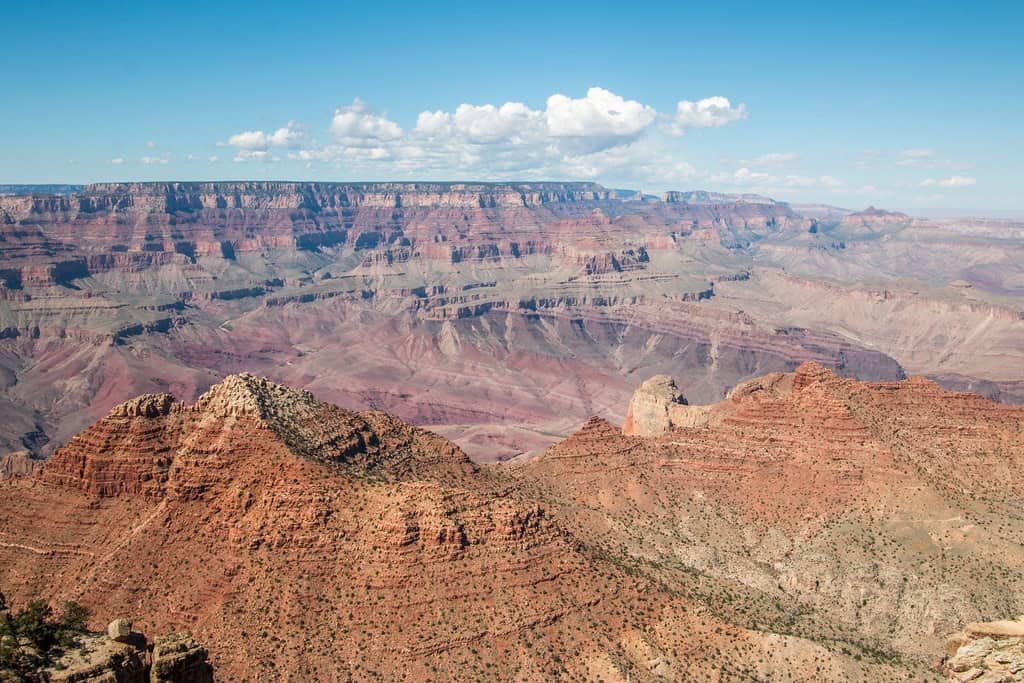
Ecological Diversity
Despite its arid appearance, the Grand Canyon supports a remarkable variety of ecosystems and wildlife. The park encompasses several distinct ecological zones, ranging from desert scrub at the bottom of the canyon to dense forests at higher elevations. This diversity is due to the dramatic changes in elevation and the presence of the Colorado River, which provides a vital water source in the otherwise dry environment.
The riparian zones along the Colorado River are lush with vegetation, including cottonwood, willow, and tamarisk trees. These areas provide crucial habitat for numerous species of birds, amphibians, and fish. The endangered humpback chub and the razorback sucker are among the native fish species that inhabit the river.
As visitors ascend from the river to the canyon rims, they encounter different plant communities. The lower canyon slopes are dominated by desert plants such as creosote bush, yucca, and agave. Higher up, pinyon-juniper woodlands and ponderosa pine forests become prevalent. The North Rim, which is higher in elevation and receives more precipitation, supports aspen, fir, and spruce trees.
The Grand Canyon is home to a diverse array of wildlife, including over 90 species of mammals, 300 species of birds, 47 species of reptiles, and 17 species of fish. Notable mammals include mule deer, bighorn sheep, and mountain lions. Birdwatchers can spot peregrine falcons, California condors, and a variety of songbirds. The canyon’s ecosystems also support numerous reptiles and amphibians, such as the collared lizard and the canyon tree frog.
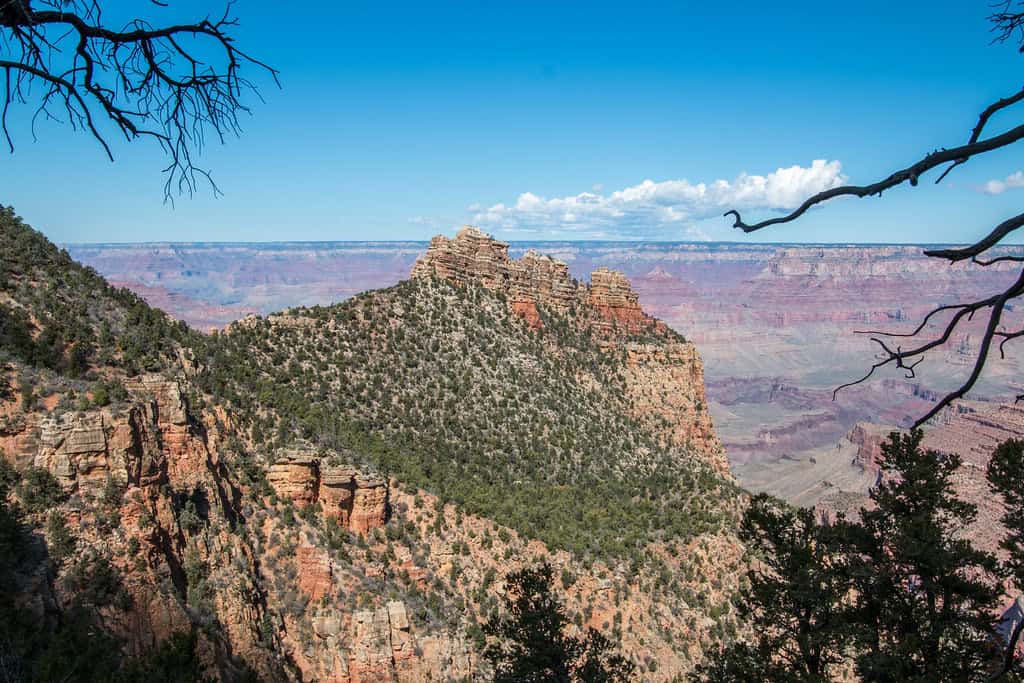
Historical and Cultural Significance
The Grand Canyon has a rich human history that spans thousands of years. The area has been inhabited by Native American tribes for millennia, with evidence of human presence dating back at least 12,000 years. The Ancestral Puebloans, known for their cliff dwellings and intricate pottery, were among the earliest inhabitants. They were followed by the Cohonina, Cerbat, and Hualapai tribes, each leaving their mark on the canyon’s history.
The Havasupai and Hualapai tribes still inhabit the region today, maintaining their cultural traditions and deep connection to the land. The Havasupai, or “people of the blue-green waters,” live in the remote village of Supai, located within the canyon. They are known for their stunning waterfalls, which attract hikers from around the world.
European exploration of the Grand Canyon began in the 16th century with the arrival of Spanish explorers. The first recorded European to view the canyon was García López de Cárdenas, who led an expedition in 1540. However, it was not until the late 19th and early 20th centuries that the Grand Canyon gained widespread recognition.
John Wesley Powell, a geologist and explorer, led the first scientific expedition down the Colorado River through the Grand Canyon in 1869. Powell’s daring journey and subsequent reports brought national attention to the canyon’s grandeur and scientific value. His explorations laid the groundwork for future scientific studies and conservation efforts.
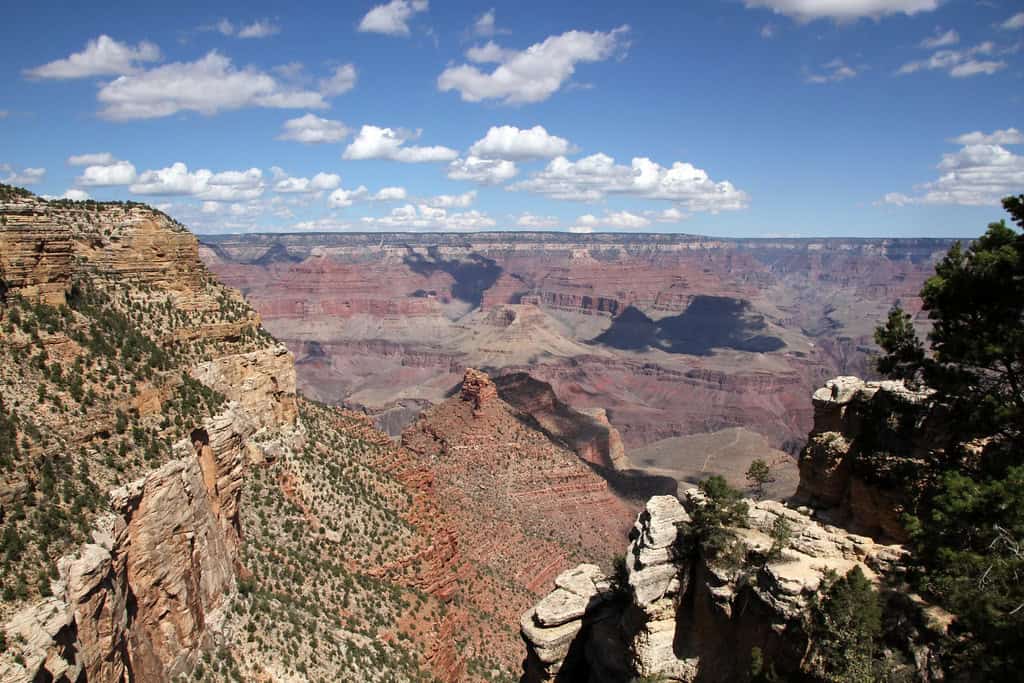
Conservation Efforts
The Grand Canyon’s designation as a protected area has been a significant milestone in the history of American conservation. In 1893, President Benjamin Harrison established the Grand Canyon Forest Reserve, recognizing the need to protect the area’s natural beauty and resources. This was followed by the establishment of the Grand Canyon National Monument by President Theodore Roosevelt in 1908, who famously declared, “Let this great wonder of nature remain as it now is.”
In 1919, the Grand Canyon was designated as a national park, solidifying its status as a protected area. The park’s creation marked a significant achievement in the American conservation movement and ensured the preservation of its unique landscapes for future generations.
Today, the National Park Service (NPS) manages the Grand Canyon with a focus on conservation, education, and visitor experience. The park faces numerous environmental challenges, including the impacts of climate change, air pollution, and increasing visitor numbers. The NPS works to address these issues through research, adaptive management strategies, and public education programs.
One of the most significant conservation efforts in recent years has been the reintroduction of the California condor. These majestic birds, once on the brink of extinction, have been successfully reintroduced to the Grand Canyon through a captive breeding program. The sight of a condor soaring above the canyon is a testament to the success of collaborative conservation efforts.
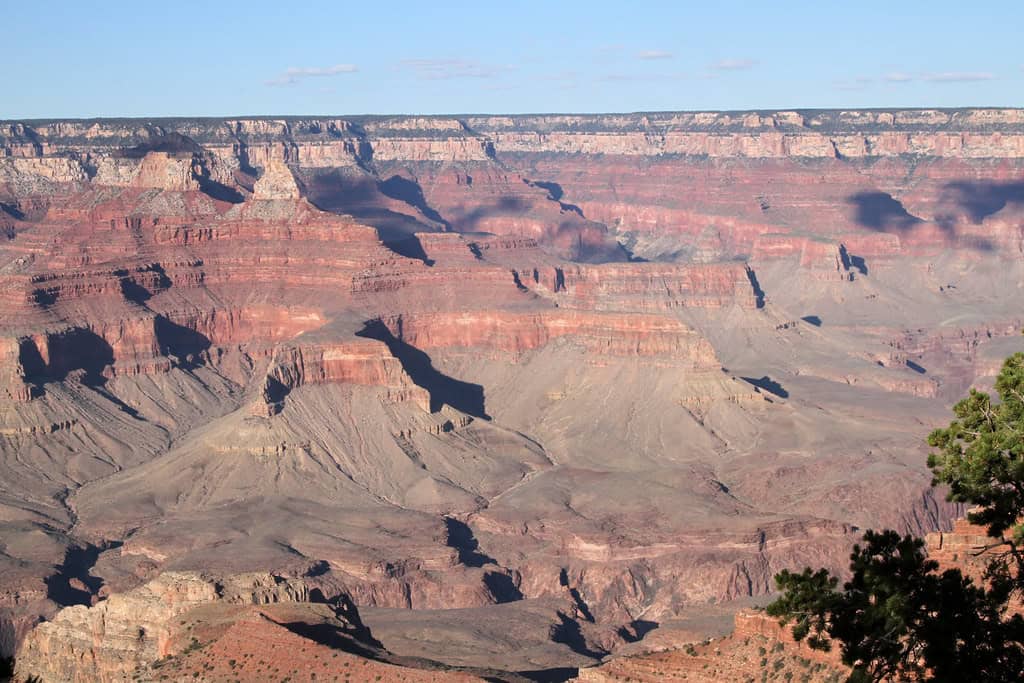
Recreational Opportunities
The Grand Canyon offers a wide range of recreational activities that attract millions of visitors each year. Whether seeking adventure, solitude, or educational experiences, the park provides something for everyone.
Hiking: The Grand Canyon boasts an extensive network of trails that cater to hikers of all skill levels. The South Rim offers popular trails such as the Bright Angel Trail and the South Kaibab Trail, which provide access to the canyon’s inner depths. The North Rim, less visited but equally stunning, features trails like the North Kaibab Trail and the Transept Trail. For experienced hikers, the Rim-to-Rim hike is a challenging and rewarding journey that spans the entire width of the canyon.
Rafting: The Colorado River is renowned for its white-water rafting opportunities. Multi-day rafting trips offer a unique perspective of the canyon’s towering cliffs, hidden waterfalls, and ancient rock formations. These trips range from leisurely floats to adrenaline-pumping rapids, providing an unforgettable adventure for participants.
Camping: The Grand Canyon offers a variety of camping options, from developed campgrounds to backcountry sites. The Mather Campground and Desert View Campground on the South Rim provide convenient access to amenities and viewpoints. For those seeking solitude, backcountry permits allow for camping in remote areas, offering a more immersive wilderness experience.
Mule Rides: For a unique and historic way to explore the canyon, visitors can embark on mule rides. These guided trips, available from both the South Rim and North Rim, take riders along narrow trails with breathtaking views. Mule rides have been a popular attraction since the early 20th century, providing a glimpse into the canyon’s history.
Educational Programs: The Grand Canyon’s rich geological and cultural history is showcased through a variety of educational programs. Ranger-led talks, guided hikes, and evening programs offer visitors the opportunity to learn about the park’s natural and human history. The Grand Canyon Visitor Center and the Yavapai Geology Museum feature exhibits that delve into the park’s geology, ecology, and conservation efforts.
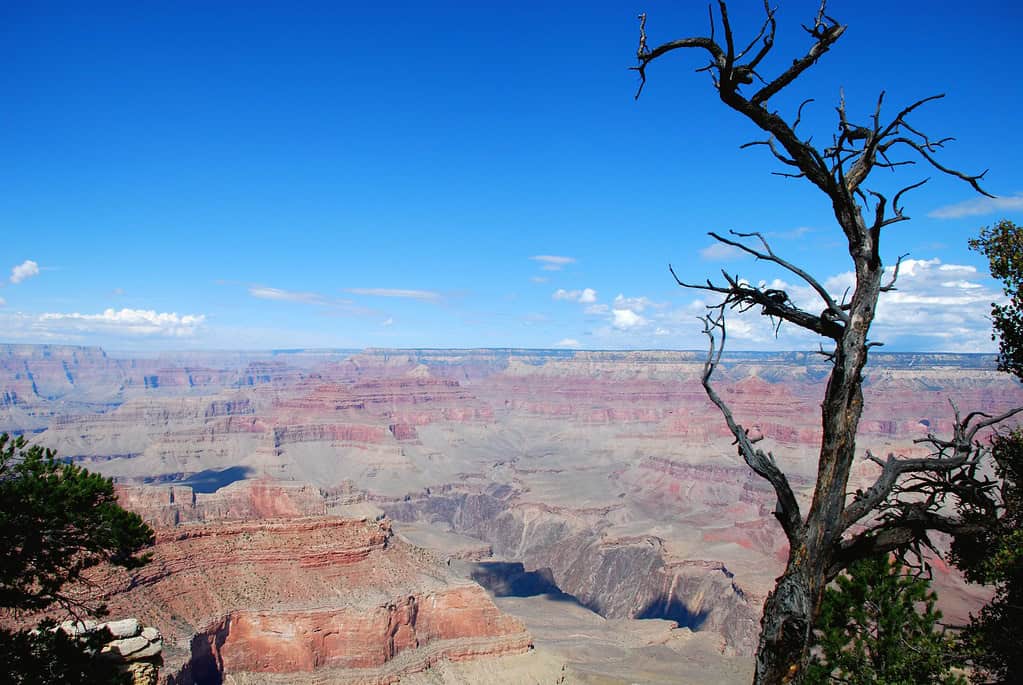
Visitor Facilities and Infrastructure
The Grand Canyon National Park is well-equipped with facilities and infrastructure to accommodate the millions of visitors it receives each year. The South Rim is the most accessible and visited part of the park, offering a range of amenities, including lodges, campgrounds, restaurants, and visitor centers. The Grand Canyon Village is the hub of activity on the South Rim, featuring historic buildings, shops, and the iconic El Tovar Hotel.
The North Rim, open from mid-May to mid-October, offers a more remote and tranquil experience. The North Rim Visitor Center, along with the Grand Canyon Lodge, provides information and services for visitors. The higher elevation and cooler temperatures make the North Rim a popular destination during the summer months.
Shuttle services operate on the South Rim, helping to reduce traffic congestion and minimize environmental impact. The shuttle system provides convenient access to popular viewpoints, trailheads, and visitor centers, making it easy for visitors to explore the park without the need for a personal vehicle.
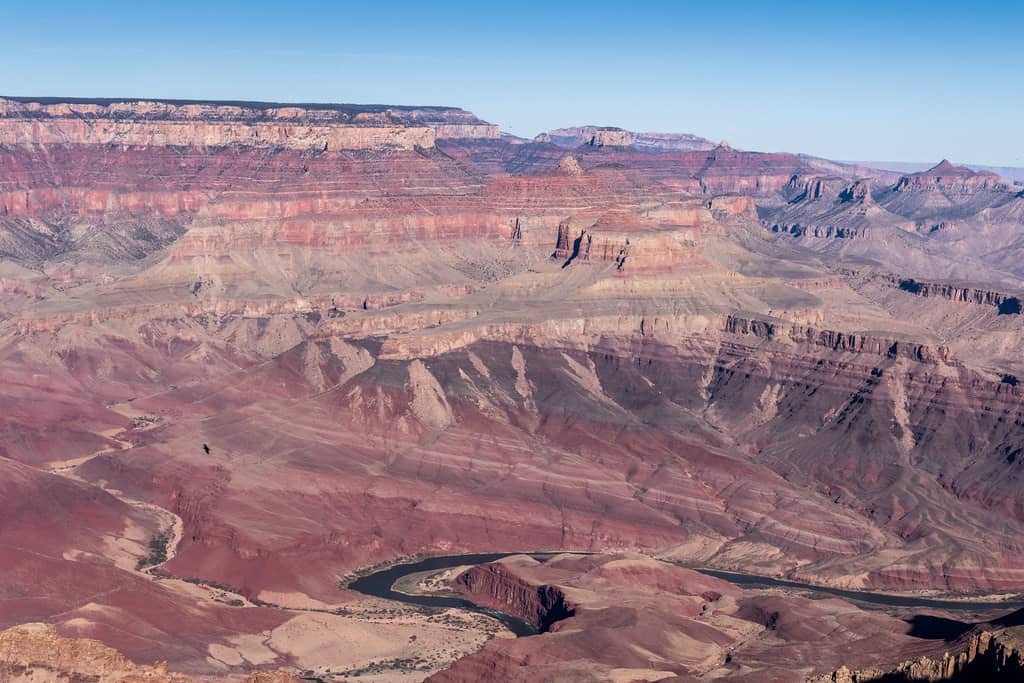
The Broader Impact of the Grand Canyon
The Grand Canyon’s influence extends beyond its geological and ecological significance. As one of the most recognizable natural landmarks in the world, it has become a symbol of the American Southwest and a source of inspiration for artists, writers, and adventurers.
The canyon’s grandeur and scientific value have made it a focal point for geological research and education. Scientists study the canyon’s rock formations to better understand Earth’s history, climate change, and geological processes. The Grand Canyon serves as a natural laboratory, providing valuable insights into the dynamic forces that shape our planet.
The park’s cultural significance is also profound. The Grand Canyon has inspired countless works of art, literature, and photography, capturing the imagination of people around the world. Its stunning vistas and dramatic landscapes have been featured in films, books, and music, cementing its place in popular culture.
The Grand Canyon is a natural wonder of unparalleled beauty and geological significance. Its ancient rock formations, diverse ecosystems, and rich cultural history make it a destination that continues to captivate and inspire visitors from around the world. Through ongoing conservation efforts and responsible tourism practices, we can ensure that this magnificent landscape remains preserved for future generations to explore and enjoy.
As we stand on the rim of the Grand Canyon, gazing into its vast expanse, we are reminded of the power and beauty of the natural world. The Grand Canyon is more than just a geological marvel; it is a testament to the enduring spirit of exploration, discovery, and conservation. It challenges us to appreciate the wonders of our planet and to strive for a deeper understanding and respect for the natural world.